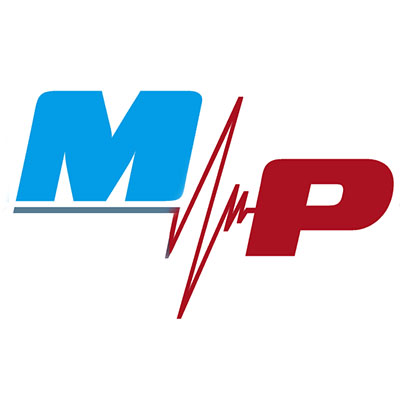Department of Neuroradiology
Head of the department- Alexander Antonenko, Board Certified in Radiology, (+Highest Category in Neurological MRI)
Senior radiology technologist- Elena Zayats
To schedule an appointment, please call 8-017-231-78-64.
Neuroradiology is the subspecialty of radiology focusing on the diagnosis and characterization of abnormalities of the central and peripheral nervous system, spine, brain, head and neck. Primary imaging modalities include computed tomography (CT) and magnetic resonance imaging (MRI). Angiography has been traditionally used for diagnosis of vascular abnormalities or diagnosis and characterization of masses or other lesions, but is being replaced in many instances by CT or MRI angiography and imaging. The group uses a range of advanced imaging modalities to evaluate neurologic disease in both adults and children. Diagnostic Neuroradiology is also a rapidly growing area because of exciting new technical advancements in CT and MRI.
The Department of Neuroradiology is a highly specialized, full-service department which strives to meet all patient and clinician needs in diagnostic imaging and image-guided therapies. Our equipment is the state-of-the-art in imaging technology and is enhanced with the latest digital picture archiving, communications, information management, and dictation systems.
Our sub-specialty staff have received extensive training and have clinical expertise in their areas of clinical service, which assures consistent, high-quality patient care in dealing with rare and complex pathologies. The Division is staffed by neuroradiologists with expertise in head and neck, spine, brain, neurovascular, and advanced CT and MRI.
Department structure
X-ray room
It’s equipped with leading edge imaging techniques producing low-radiation but high quality pictures.
X-ray diagnostic unit “Cosmos Universal Tomo” provides a comprehensive range of x-ray examinations:
-
Skull X-Ray
-
Spinal X-Rays
-
Chest X-Ray
-
Abdominal X-Ray
-
Pelvic X-Ray
-
Extremity X-Rays
Radiographic (X-ray) Examination FAQs
-
What is an X-ray?
-
An X-ray (or radiograph) is a non-invasive diagnostic test of a body part or area of a patient’s body that is produced using an x-ray “beam”. The beam is invisible and passes through the body producing a picture based on the density of the structures it encountered. X-rays play an important role in a number of medical settings including in their use for dental procedures and mammography. X-rays involve a low dose of radiation and are limited to the area of interest, making this an extremely safe diagnostic tool.
-
Why did my doctor order an X-ray?
-
X-rays play an important role in the evaluation of various musculoskeletal disorders including trauma related injuries such as bone fractures and joint dislocations and more chronic joint problems like osteoarthritis and rheumatoid arthritis. The information found on the X-ray images can play an important role in the diagnosis and treatment of these and other medical conditions.
-
How should I prepare for the X-ray?
-
There is no preparation needed for the vast majority of musculoskeletal X-rays. If there is any possibility of pregnancy, you should inform your referring doctor, our scheduling office when your appointment is booked as well as the radiology technologist at the time of your imaging appointment. In most cases, an X-ray will not be done if there is a chance a patient is pregnant unless the benefits out weight the risks of radiation.
-
What should I bring to my appointment?
-
In order for us to perform your test, you will need to bring your prescription, insurance card, and any related insurance forms or pre-approvals.
-
When should I arrive for my appointment?
-
When you schedule your appointment, our scheduling associate will let you know how soon before your appointment time you should arrive. Depending on the exact type of exam, this may be 30-60 minutes before your scheduled appointment. This will allow time for registration and to complete all necessary paperwork, forms, and questionnaires.
-
To save time, you may download, print, and fill out the appropriate forms at home and bring them with you on the day of your appointment.
-
How is the X-ray performed and who interprets the X-ray?
-
The X-ray examination will be performed by one of our experienced, licensed radiology technologists. Our technologists are trained in producing diagnostic, low-radiation images that limit the risk of radiation to our patients while producing high quality pictures that can be used to make an accurate diagnosis. Lead shields and aprons are available for use as needed.
-
Depending on the type of examination, you may need to change into a gown and/or remove certain clothing or accessories that may interfere with the quality of the picture. You will then be taken into one our dedicated X-ray rooms to have your study completed. Once the images are obtained, the technologist will review to make sure that they meet the criteria for diagnostic use. Occasionally, additional images may need to be obtained in order to have all the important information included on the study. The X-ray images are then sent electronically to the musculoskeletal radiologist for review.
-
The musculoskeletal radiologist is a physician trained in radiology with sub-specialty training in conditions of the musculoskeletal system including sports medicine injuries, spinal disorders, arthritis, and tumors. The MSK radiologists at NYU combine a comprehensive knowledge base of these various conditions with a deft understanding of X-ray imaging to produce high-quality, accurate interpretations of your imaging studies. The findings that the radiologist sees on your study are summarized and organized into a report that is immediately sent to your doctor for review. If there is an emergent finding (ex. acute fracture) that needs urgent attention, the radiologist will call your doctor directly to explain what is found on the X-ray.
-
What can I expect after the examination?
You should be able to leave our department without assistance right after the study has been completed and resume your regular daily activities without limitation. You should follow up with your referring physician to review the results. Copies of this report should be available at your referring doctor’s office.
CT scanning room
There is the only one in the republic new cutting-edge CT system - Discovery CT750 HD.
The Discovery CT750 HD with its Gemstone™ imaging chain bring clinicians and referring Physicians up to 47% improvement in image
quality, up to 50% dose reduction across the entire body and exceptional Spectral Imaging capabilities.
The Discovery CT750 HD CT Scanner System is indicated for head and brain, whole body, cardiac and vascular X-ray Computed Tomography
applications.
The device output is a valuable medical tool for the diagnosis of disease, trauma, or abnormality and for planning, guiding, and
monitoring therapy.
The Spectral Imaging option is included on the system, so the system can acquire CT images using different kV levels of the same
anatomical region of a patient in a single rotation from a single source. The differences in the energy dependence of the attenuation
coefficient of the different materials provide information about the chemical composition of body materials. This approach enables
images to be generated at energies selected from the available spectrum to visualize and analyze information about anatomical and pathological structures.
FAQs
What is a CT scan?
A CT scan is carried out by using a special X-ray machine, which produces an image of a cross-section, or slice, of the body. The scanner consists of a ‘doughnut-shaped’ structure, or gantry, about two feet thick with a hole in its centre, through which you pass while lying on a couch.
A narrow fan-shaped beam of X-rays is produced from inside the gantry and rotates in a complete circle around you. The X-rays pass through your body and are detected by electronic sensors on the other side of the gantry. This information passes to a computer which produces a picture of the internal structure of the body. The pictures are displayed on a screen for examination by the radiologist.
It takes about less than a second to produce each slice, which can vary in thickness from one millimetre to one centimetre, depending on how much of the body is being scanned.
Are there any risks?
CT scanning involves the use of X-rays. Women who are or might be pregnant must inform a member of staff in advance. The amount of radiation used is more than an ordinary X-ray of the chest or body and is equal to the natural radiation that we receive from the atmosphere over a period of approximately three years.
Many CT examinations involve you having a contrast medium injected into a vein to increase the quality of information obtained from the scan. The injection usually causes nothing more than a warm feeling passing around your body.
Despite these slight risks, your doctor believes it is advisable that you should have this examination, and do bear in mind there are greater risks from missing a serious disorder by not having your scan.
Are you required to make any special preparations?
You may be given or sent instructions which will relate to the part of the body to be scanned, for example, for some abdominal scans patients are asked not to eat anything for a few hours before the scan. Unless you have been told otherwise, you may eat and drink normally before and after the scan.
If you are having a CT scan of your chest/abdomen/pelvis, you may be required to fast for four hours before the scan. You may be asked to drink fluid called oral contrast before the examination is performed. This should be taken slowly over a period of one hour; that is, you should drink approximately one cup every 10 minutes.
When you arrive
The procedure for your examination will be explained to you. If you have to undress for the procedure, you will be shown to a private cubicle where you will be asked to put on the gown provided. You will be asked to place your clothes and personal items in a locker or a basket, which you will keep with you.
You should let the radiographer know if you have diabetes, kidney problems, asthma or any allergies.
Who will you see?
You will see a radiographer and perhaps an assistant. A radiologist or another doctor may give you the injection, or this may be done by a radiographer.
What happens during the CT scan?
You will be taken into the special X-ray room and made comfortable lying on the couch. Straps and pillows may be used to help maintain the correct position and to keep you still during the examination. You may be given an injection of a contrast medium into a vein in your arm a few seconds before the scan starts. The couch will be moved slowly to position the part of your body under investigation within the ‘doughnut’.
The radiographers will retire to the control room but you will be able to talk to them via an intercom, and they will be watching you and listening all the time. When you enter the CT scanner special lights may be used to ensure that you are properly positioned. With modern CT scanners, you will only hear slight buzzing, clicking and whirring sounds as the CT scanners revolves during the course of the procedure.
During the scan, you may be asked to hold your breath or not swallow while images are being produced. However, if you feel any discomfort or apprehension, please tell the radiographer immediately.
Once the scanning is complete, you may be asked to wait until it is determined that the images are of high enough quality for the radiologist to read.
Will it be uncomfortable?
No. You will not feel any pain, although you might feel a slight discomfort arising from having to lie still, and of having a full bladder or rectum.
How long will it take?
If you are given fluid to drink on arrival, you might have to wait an hour before entering the scanning room. The scanning process will then take about 20 minutes. Unless you are delayed by having to wait, such as for an emergency patient, the total time in the department will be about 90 minutes.
Are there any side-effects?
Not usually, although you might need to visit the toilet again. You can drive home afterwards and may return to work as necessary. If you have had a contrast injection, you should wait at least one hour before driving.
Can you eat and drink afterwards?
Yes.
When will you get the results?
The scan will be examined after your visit and a written report will be ready normally in 1 day.
MRI room
The division is provided with the first and the only one in the republic Discovery MR750w MRI unit.
The new system addresses patient demand for a better and more comfortable scanning experience. In particular, the new patient-friendly design accommodates patients who are usually difficult to scan, such as larger, claustrophobic, elderly, or young patients, or those who are in pain and require a larger imaging system. Additionally, the system combines next-generation clinical applications and a full 50 x 50 x 50 cm FOV with excellent homogeneity, and enables users to reduce exam time and scan large anatomies with fewer scans—compared to previous generation systems.
The Discovery MR750w system features a compact, lightweight, superconducting magnet (3,0 T) designed to provide ensure uniform signal and fat-suppression over a large, uncompromised imaging volume.
With the powerful 3.0T magnet as its foundation, the Discovery MR750w provides a robust combination of technologies for an uncompromised field of view.
The Discovery MR750w gradient system achieves high temporal resolution and helps drive the high patient throughput. The accuracy and linearity of the gradients are required to support a true, uncompromised field of view and high resolution off of isocenter.
The robust gradients of the Discovery MR750w allow you to capture the first out-of-phase TE at 1.1 ms consistently with excellent resolution. (Dual Echo Liver Assessment)
3D Gradwarp reduce image distortion by correcting for gradient field non-linearities in all three directions, leading to more spatial accuracy in the resulting image.
MultiDrive RF Transmit
-
MultiDrive ensures the RF and amplitude of each pulse are adapted for the anatomy of interest.
-
MultiDrive’s RF modification produces uniform MR signal during reception.
-
MultiDrive automatically compensates and virtually eliminates B1-induced signal shading across different body shapes and sizes. The result is consistently clear and uniform images.
High Density Elements
The GEM posterior array has optimal coil element geometry for each patient and targeted anatomy. Unlike many matrix arrays that use the exact same coil element size and shape for all anatomy, the GEM posterior array uses optimized element layouts for the cervical-to-thoracic spine transition, thoracic and lumbar spine and the body. This approach maximizes the signal-to-noise ratio by matching the geometry of the coil elements to the anatomical size and shape of the anatomy.
Optical RF (OpTix)
OpTix Optical RF offers high channel count, analog to digital-optical signal conversion where it matters – inside the scan room to minimize noise and signal degradation, but away from the patient to enhance comfort.
GEM Suite
The Geometry Embracing Method (GEM) Suite is designed with a renewed sense of empathy to bring an enhanced level of comfort to patients, helping to minimize anxiety and motion during the exam. Crafted to embrace the unique geometry of each patient by adapting its size and shape for a closer fit to the desired anatomy, this suite of coils makes for a more relaxed scan experience and exceptional image quality.
GEM express patient table and posterior array
The GEM express patient table is a mobile patient transport with an embedded high-density, posterior RF coil array. The integrated posterior array supports both head-first and feet-first imaging for all anatomies and can help eliminate the need to reposition patients within an exam, as well as the need for coil exchanges.
GEM anterior array
The GEM anterior array facilitates extended coverage of chest, abdomen, pelvis and cardiac imaging. It is lightweight, flexible, thin and pre-formed to conform to the patient’s size and shape.
GEM small anterior array
The GEM small anterior array is tailored for smaller patients and dedicated cardiac exams.
Gradients
Gradient speed, accuracy and reproducibility often determine the success of demanding acquisitions like fMRI, DTI and Fiesta. The gradient and RF body coils are water and air-cooled for optimum duty-cycle performance, short TR’s and TE’s, producing sharp and clear images
The Discovery MR750w offers the latest advanced applications to help utilize the full potential of 3.0T MR imaging.
Those applications allow to acquire contrast-quality images without using contrast. Patients can now be evaluated without contrast injections.
Applications
CONTRAST WITHOUT CONTRAST
-
Inhance DeltaFlow
High-resolution, rapid, non-contrast lower extremity/peripheral vascular three-station imaging in less than six minutes.
-
Inhance 3D Velocity
High-resolution, fast, non-contrast imaging of the arterial and venous structure in the brain.
-
Inhance IFIR (Inflow Inversion Recovery)
Consistent and reliable non-contrast, free-breathing imaging of the arterial and venous vascular, such as the renal and portal vein.
-
3D ASL
Non-contrast brain perfusion. Quantitative perfusion imaging without contrast.
LIVER TISSUE CHARACTERIZATION
-
IDEAL-IQ
Non-invasive characterization of fat content.
-
MR-Touch
Non-invasive measure of liver stiffness.
-
eDWI
Ability to visualize pathology and measure ADC values in a single breath hold in the liver and beyond.
NEURO
-
Cube
3D FSE-based sequence for isotropic resolution in all contrasts (T1, T2, & T2-FLAIR).
-
SWAN
High-resolution visualization and delineation of small vessels and microbleeds.
-
PROPELLER
Motion-insensitive T1-FLAIR, T2, T2-FLAIR and DWI for efficient imaging of uncooperative patients.
-
3D MERGE
Improves grey-white matter contrast in the spinal cord.
MUSCULOSKELETAL
-
PROPELLER
Motion-insensitive T1, T2 and PD imaging to improve the visualization of subtle structures such as cartilage, meniscus, ligaments and labrum.
BODY
-
LAVA-Flex
A rapid 3D sequence for consistent and reliable fat saturation in one breath hold.
-
MRCP (MR cholangiography)
High-resolution reliable visualization of the biliary ducts.
-
PROPELLER
Motion-insensitive, free-breathing T2 abdominal imaging.
-
Whole Body w/ GEM Suite
Perform whole body imaging without repositioning the patient or coils.
Patient Safety Tips Prior to the Procedure
Because of the strong magnetic field used during the exam, certain conditions may prevent you from having a MR procedure. When scheduling your appointment and prior to your exam, please alert our staff and technologist to the following conditions that may apply to you. The radiology staff will let then let you know whether you can have the MRI exam and whether the exam needs to be modified for your particular condition.
-
Pacemaker
-
Pregnancy
-
Claustrophobia
-
History of kidney problems
-
Skin tattoos
-
Neurostimulators (TENS-unit)
-
Implanted drug infusion device (i.e., insulin pump)
-
Exposure of metal fragments to your eye
-
Artificial heart valves
-
Aneurysm clips
-
Cochlear implants
-
Metallic implants and prosthesis
-
Vascular stent or stent graft
-
History as a metal worker
-
Shrapnel or bullet wounds
-
Dorsal column stimulators
-
Allergy to iodine, or gadolinium
-
History of diabetes
-
Other conditions you believe to be relevant
- Please leave your valuables at home, including jewelry, to prevent it from being lost or stolen, for they have to be removed prior to entering the scan room.
- If you don’t want to change into hospital attire, please wear cotton clothing without any metal zippers, hooks, or buttons.
- Please let us know if you need interpreting services, this can be arranged for you.
- Please bring a list of your current medications.
- If you have claustrophobia, your doctor may prescribe an oral medication for you to take with you for your MRI appointment.
What can I expect before my MRI exam?
There is little preparation for an MRI exam. Take your daily medications as you normally would, unless instructed otherwise. There are few dietary restrictions for an MRI. For those exams, you will be notified of the requirements.
Please arrive at least 30 minutes prior to your exam and check in with the receptionist. You will need to complete the MRI screening form.
If your clothes have any metal fasteners or metallic design, you will be asked to change into a hospital gown. A locker will be supplied to secure your belongings.
A technologist will verify your identification and the requested exam. Your screening form will be reviewed by the technologist in consultation with the radiologist if indicated. If MRI contrast is indicated for the exam, an IV catheter will be inserted in your arm by a nurse or technologist.
What can I expect during my MRI scan?
The duration of the procedure will vary but the average is 45 minutes to one hour per body part.
You will be required to lie still during the actual MR scanning. Depending on the body part that is being examined, you may be instructed to hold your breath for up to 30 seconds.
The magnet is permanently open on both ends. It is well lit and there is a fan for patient comfort. There is also a two way intercom system for communication between patient and technologist. The part of the body being scanned will be placed in the middle of the magnet.
During the actual imaging, you will hear a loud intermittent banging noise. You will be provided with earplugs or head phones to minimize the noise during the procedure.
The technologist will also provide you with an alarm button to alert the technologist of any discomfort you may experience at any point during the MRI exam.
Some MRI exams require an injection of intravenous MRI contrast. Inform the technologist if you experience any discomfort during the injection.
What can I expect after my MRI scan?
If a dye injection is used, the IV is removed from the arm before you go home.
Allergic reaction from gadolinium dye is extremely rare. However, if you experience symptoms such as rash, hives, or shortness of breath, you should notify the technologist immediately if you are still at the imaging facility, or call your doctor or go to the nearest hospital if you have already left the imaging facility.
In the event that sedation is needed (such as for claustrophobia), you will be sent home once awake and alert. If you receive sedation, someone must drive you home.
Paid services contact person: Yulia Komandyshko, Head of department +375 17 267-27-03 E-mail: ninh_platno@mail.ru Languages: English, Russian



















